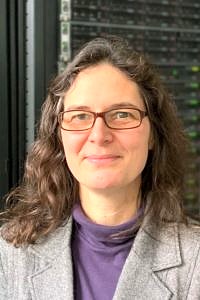Prof. Dr. Petra Imhof new at the Department
Imhof takes the lead of the CCC
Since March 2020, Prof. Dr. Petra Imhof has been appointed to the W2 Professorship of Computational Chemistry at the Department of Chemistry and Pharmacy. Prof. Imhof has also taken over the management of the Computer Chemie Centrum (CCC) in place of Prof. Clark.
Petra Imhof studied chemistry at Heinrich Heine University, Düsseldorf, where she also received her doctorate in 2001. She then spent a year as a postdoc at the Max Planck Institute for Coal Research in Mühlheim a. d. Ruhr. Afterwards, she worked at the Interdisciplinary Center for Scientific Computing at Ruprecht Karls University, Heidelberg.
In 2011, she took over the Stand-in-Professorship of Scientific Computing in the Life Sciences in Heidelberg, and in April 2013, she accepted the offer of the W2 Professorship for Theoretical Physics Molecular Biosystems at the Freie Universität Berlin. Six years later, Prof. Imhof moved to the Universitetet i Stavanger, Norway, where she held a Professorship in Chemistry until February 2020, before she accepted FAU’s call in March 2020.
“Erlangen with its Computer Chemie Centrum is a location, where computer-aided chemistry (Computational Chemistry) is paid great attention and is represented by a rarely found number of professorships and working groups in this field. The broad spectrum of fields of application both in the materials sciences and (now through my professorship) in the life sciences promises exciting cooperations within CCC and with the working groups in the neighbouring subjects”, says Prof. Imhof.
The Imhof research group conducts basic research in the field of life sciences. Computer-aided chemistry is used to represent biochemical and biophysical processes at the molecular level. By means of atomistic simulations, e.g., it is researched how enzymes perform their task as biocatalysts, which interactions are important for DNA-processing proteins to recognise the correct binding site, or how protons are “pumped” through a cell membrane. This data provides information on the most likely mechanisms and the factors involved in the regulation of these processes.
Contact
Prof. Dr. Petra Imhof
Nägelsbachstraße 25
91052 Erlangen
- Phone number: +49 9131 85-20401
- Email: petra.imhof@fau.de
- Website: https://www.chemistry.nat.fau.eu/imhof-group/

